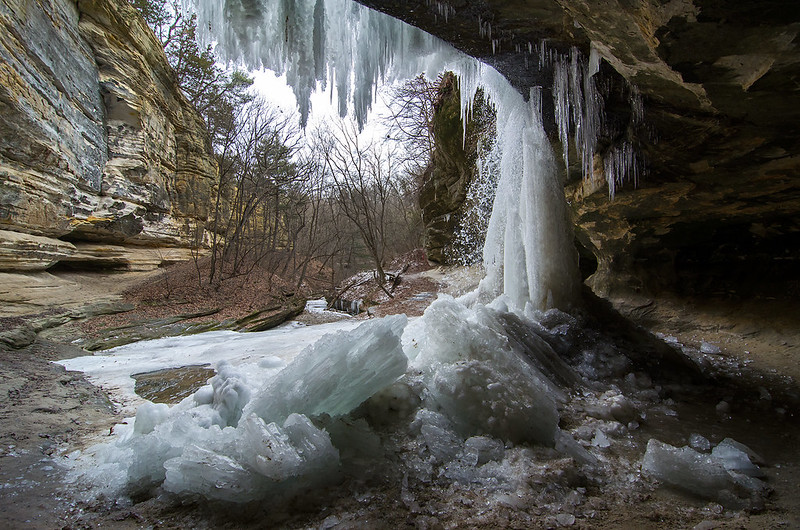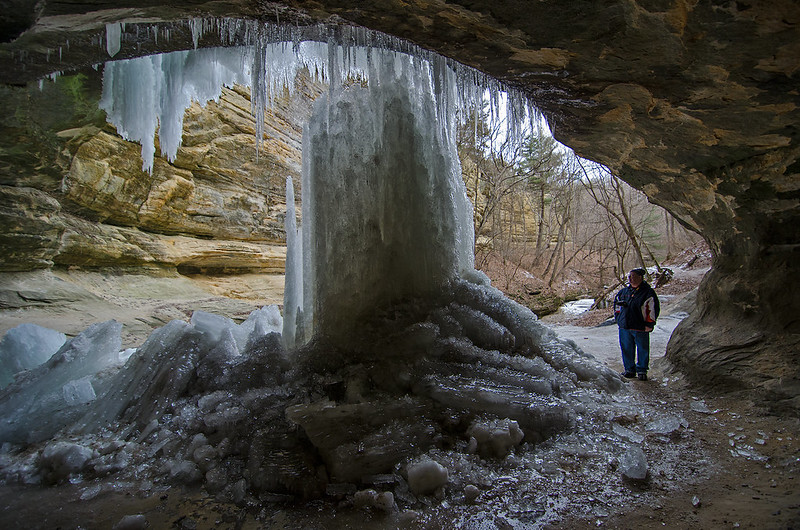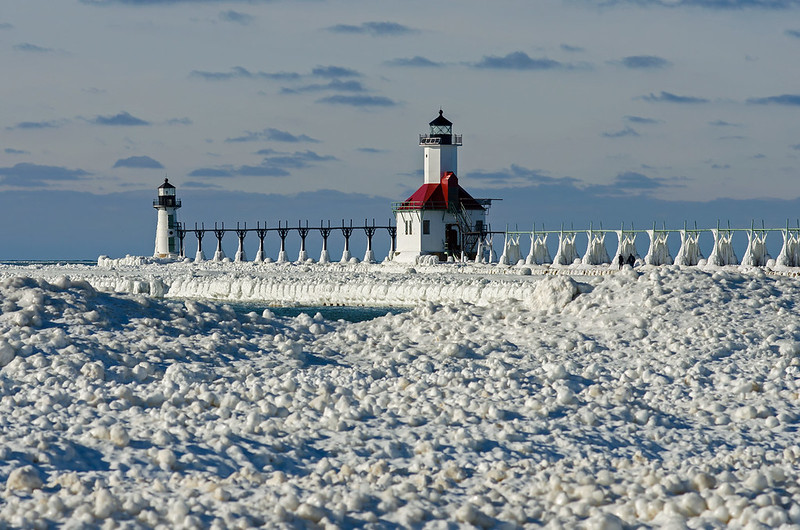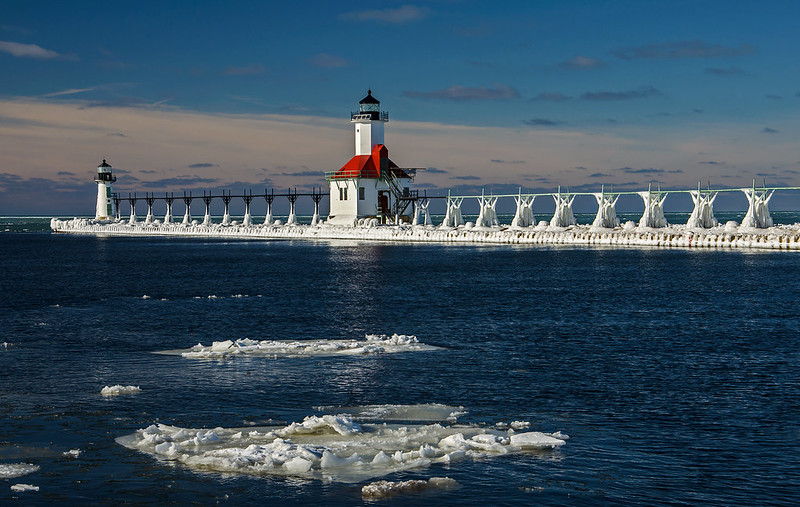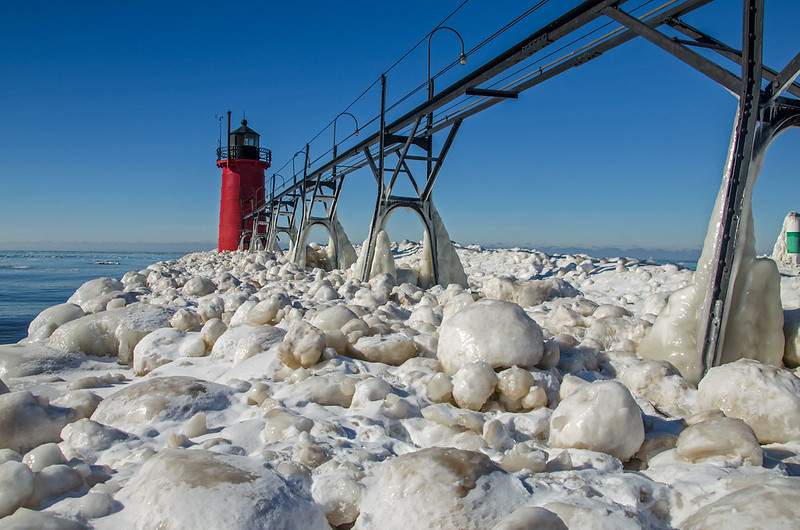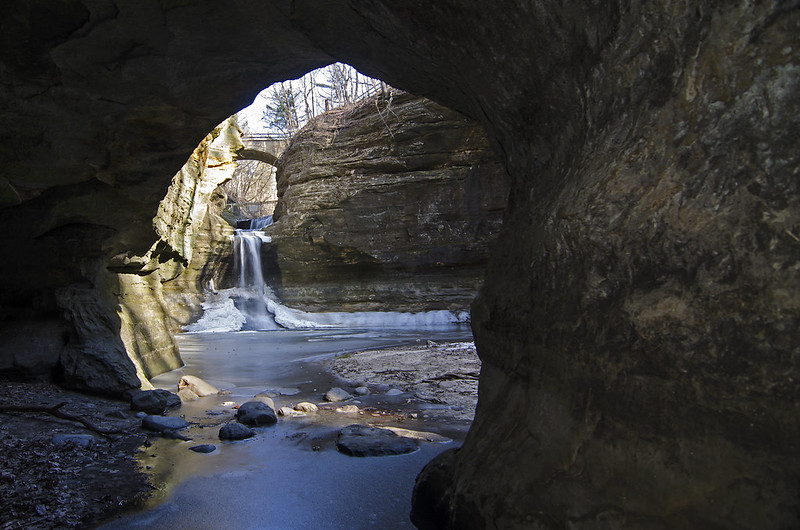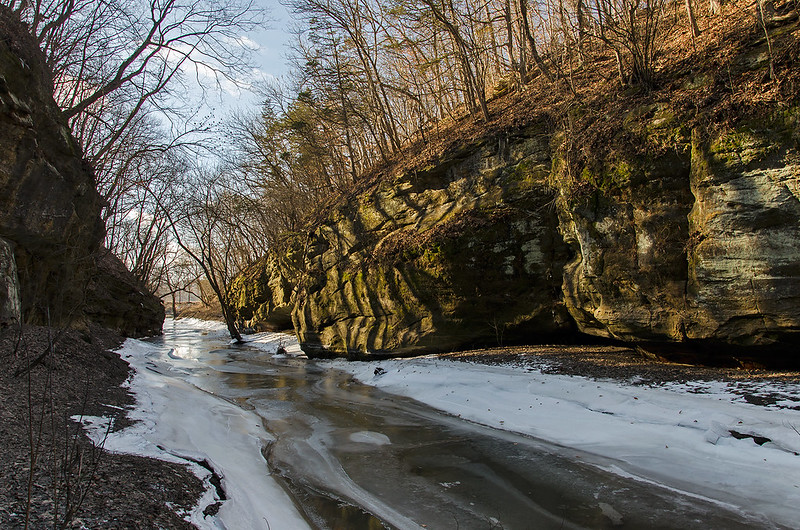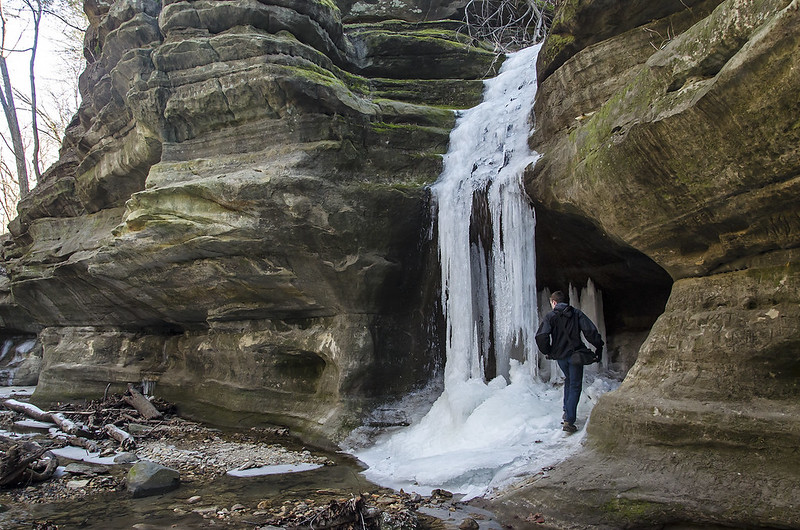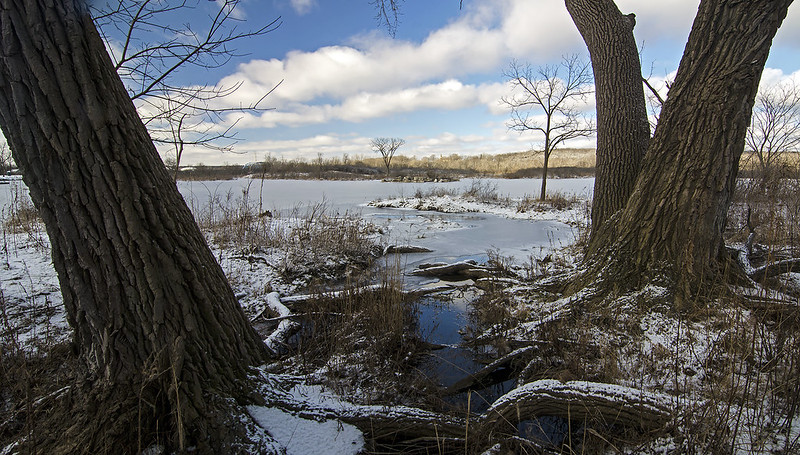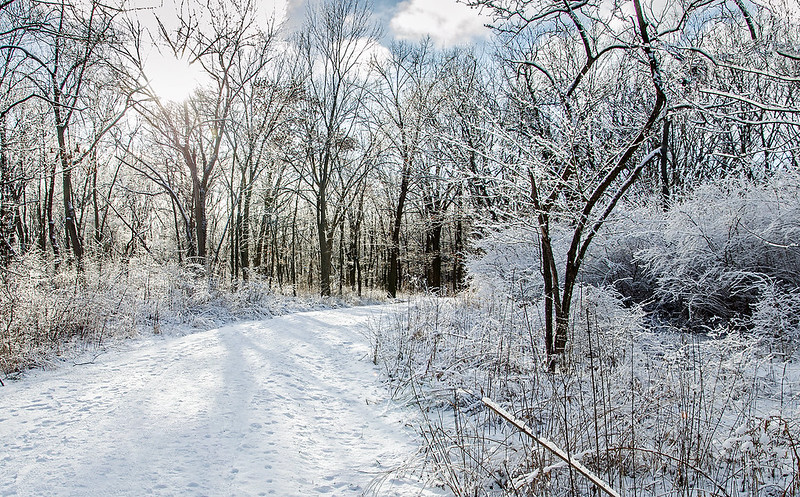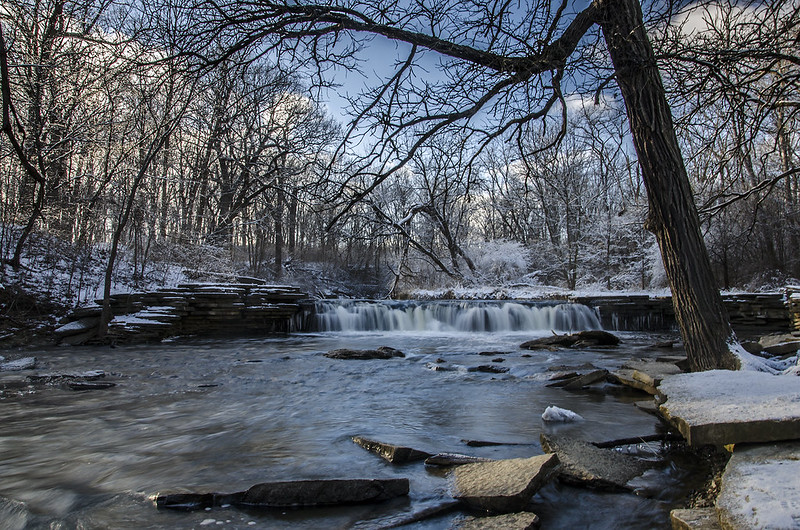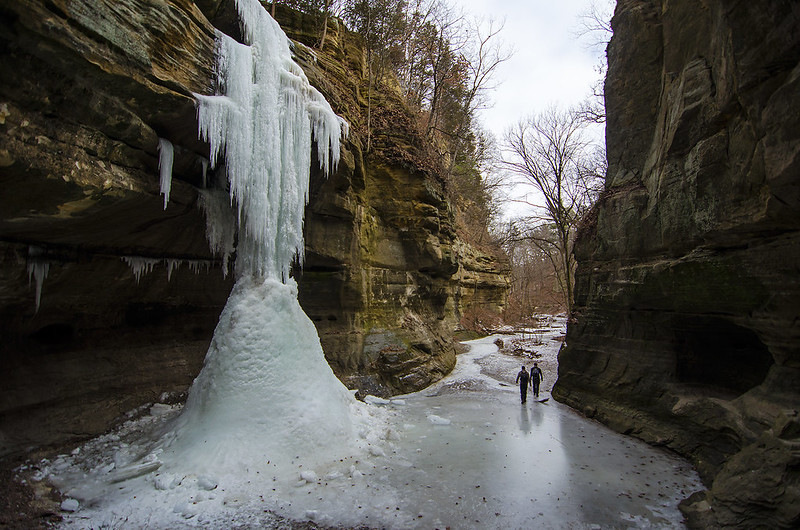
At approximately 60 feet in height, the frozen waterfall seen here is one of the two waterfalls found in Starved Rock State Park's Tonty Canyon. Following the often narrow trail that winds about 20 feet above the canyon floor can be a bit tricky in wet weather, but add ice, and it becomes dangerous. So much, that the trail was closed on one end, forcing us to walk to LaSalle Canyon first, just to double back to Tonty. And of course, leaving the canyon meant doubling back again through LaSalle.
The two waterfalls were frozen, but this one in particular was more complete, and ornate in ice formations. The melting snow above fed the ice fall, and the below freezing temperatures helped build the ice falls.
Ice climbing in Starved Rock is not unusual, and this is one of the ice falls I've seen people climb. Wildcat Canyon's 80 foot waterfall is a popular choice, as it's one of the closest falls to the visitor center and lodge. Luckily, were arrived before the falls became large and strong enough to climb; climbing often ruins the intricate formations on the falls.
Most of the ice falls are hidden from passers by, and require a hike into the blind canyons. They often reveal themselves dramatically after hikers round the last turn in the canyon, so the condition of the ice is never known until the last minute - but generally well worth the hike even if the ice has not formed.
